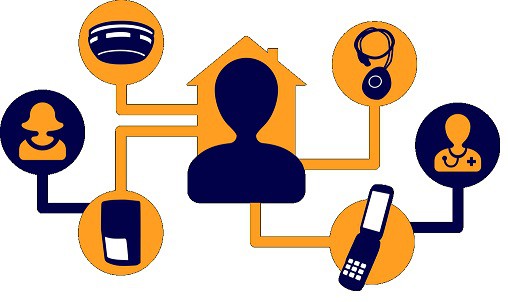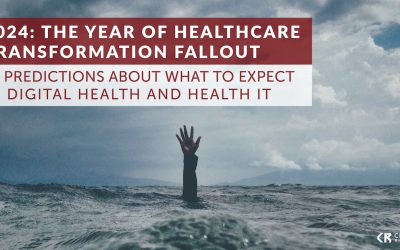Last year, after attending two very different conferences in a two-week span, I wrote about healthcare’s parallel paths of innovation. Silicon Valley follows one line, and brick-and-mortar healthcare organizations (HCOs) follows the other. The former gets a lot more attention, but the latter is a bit more pragmatic.
The recent mHealth and Telehealth World conference offered evidence that this notion hasn’t changed. Startups offer consumers a bevy of telehealth services from the convenience of their smartphone, with the promise of a diagnosis in minutes and a payment at the point of care. HCOs use telehealth for far less sexy purposes, including video consults, follow-up appointments, and cognitive therapy. The clunky client on the cart may have been replaced with a tablet but, by definition, it’s still a COW.
The same theme of parallel innovation tracks emerges with telehealth. On-demand, consumer-facing apps get the media attention. HCO telehealth departments plod along, their findings published in journals and discussed in hotel conference rooms in the middle of the summer. Even the companies who provide these services to HCOs, namely Avizia and Specialists on Call, refer to themselves as “the vendor you’ve never heard of,” since they whitelist their solutions for hospitals across the country.
So there’s little surprise that conversations about telehealth tend to gravitate to one-off encounters and not repeated encounters tied to coordinated care plans for chronic condition management. And if the conversation does turn to episodic telehealth, it’s often about the barriers (licensing, reimbursement, buy-in, training, Epic integration, and so on) and not the benefits.
As it turns out, effective use cases for telehealth were out and about at mHealth and Telehealth World:
- University of Rochester Medical Center (New York) has reduced ED visits among pediatric patients by offering telehealth services at inner-city neighborhood sites such as daycares and schools. Multi-party videoconferencing helps accommodate parents and guardians during work hours.
- The University of Illinois at Chicago used SMS messaging and video tutorials to improve medication adherence among cancer patients, especially those whose treatments include on-again, off-again dosing or a steady stream of new medications.
- Robert Wood Johnson University Hospital (New Jersey) has expedited the initiation of video consultations, physician recommendations, and tPA drug administration in stroke treatment. This has reduced the number of transfers to RWJUH – the “hub” in this model – and improved continuity of care for patients who are treated at “spoke” facilities.
- Another hub, Dartmouth-Hitchcock Medical Center, has built enough of a business providing specialty care via telehealth to northern New England and upstate New York that it now sells its services lines (including ICU, stroke, and pharmacy) on a subscription basis and has partnered with the Mayo Clinic to make its physicians available to more partners.
Admittedly, these use cases are neither new nor novel. After all, the same prefix in telehealth appears in telephone and television, the cutting-edge technology behind early digital health efforts. Anyone streaming commercial-free TV on a mobile device rarely used to actually make phone calls cannot be blamed for responding to these “innovations” with little more than a shrug.
But dismissing HCO-led telehealth efforts is to miss the forest for the trees. Only a fraction of consumer-facing health apps are for clinical use, and telehealth is no exception. Though this reflects the industry’s (philosophical if not yet practical) shift from providing care to encouraging health, it does not address the glaring need for improved chronic care and disease management.
A recent Meritalk article explained why telehealth faces an uncharted future: The development of technology that can provide on-demand care has thus far outpaced the industry’s collective willingness to embrace it (the Veteran’s Health Administration being a notable exception). That’s why it’s time for these parallel paths of telehealth development to intersect.
As American Well and others begin to bring their consumer-centric vision for telehealth to chronic care, they should heed the lessons of HCOs that have built successful programs and avoid the temptation, so prevalent in the startup world, to tear everything down and start over. Meanwhile, HCOs wary of digital snake oil should heed the example of the Innovation Hub at Brigham and Women’s Hospital (Massachusetts), which directly engages external companies that can solve BWH’s problems, instead of fielding countless inbound inquiries from companies too far from the target.
Sarah N. Pletcher, medical director and founder of Dartmouth-Hitchcock’s, Center for Telehealth, noted that the partnerships necessary to drive telehealth success are like marriages. Beyond shared interests and beliefs, there’s a need to be up front about finances, governance, and housekeeping. Reaching these compromises is not easy, but it’s essential if healthcare’s parallel innovation paths are ever to come together.





0 Comments